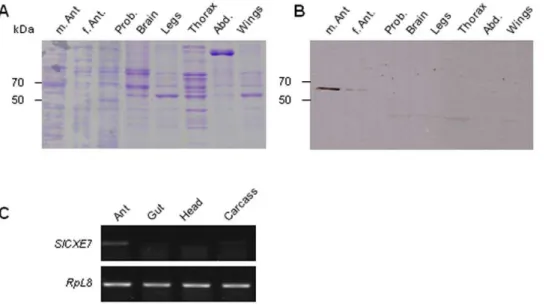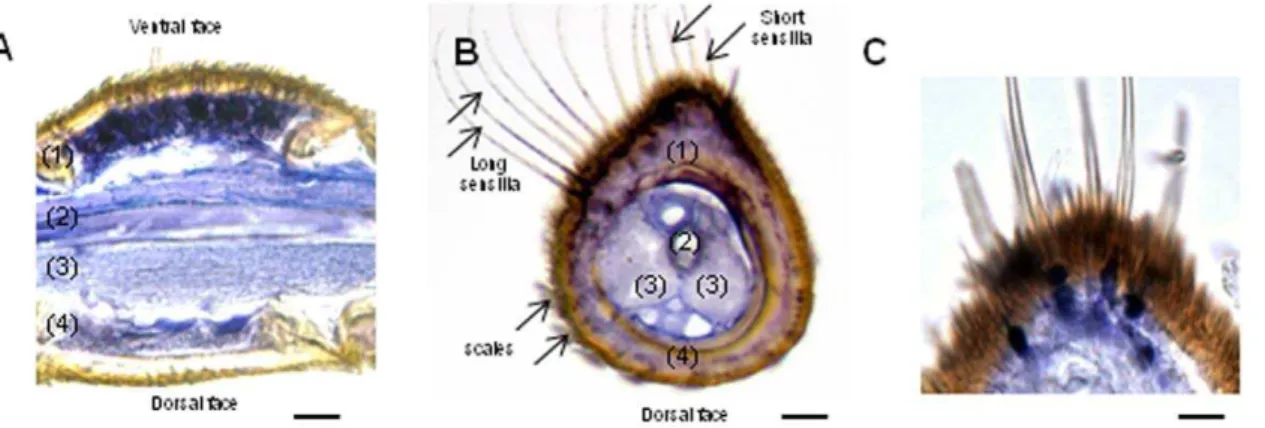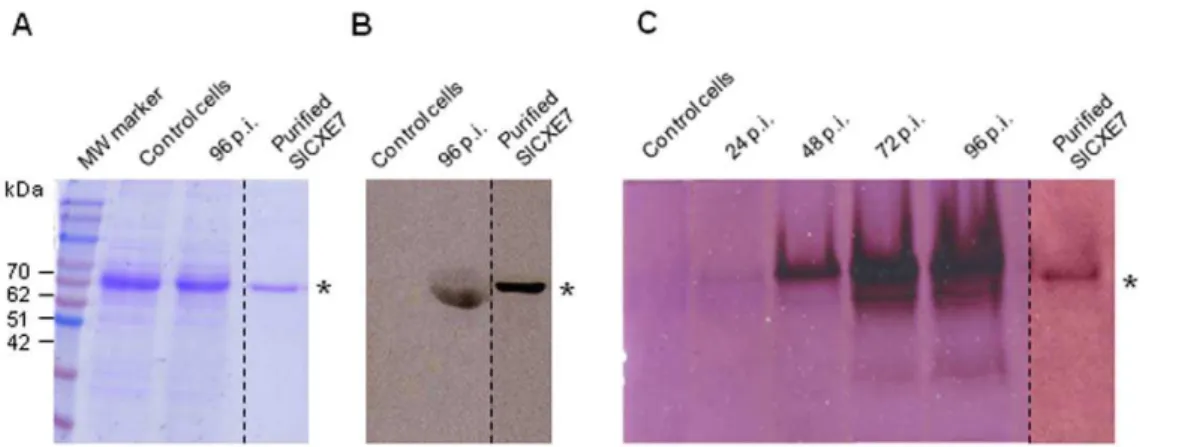Degradation of pheromone and plant volatile components by a same odorant-degrading enzyme in the cotton leafworm, Spodoptera littoralis.
Texto
Imagem



Documentos relacionados
Pattern recognition of the GC×GC-FID chromatograms was performed by parallel factor analysis (PARAFAC) and it was successfully applied for the differentiation of these
The purpose of this work was to characterize the enzyme penicillin G acylase (PGA) produced by Bacillus megaterium. Purification of the enzyme by ultra/diafiltration did not allow
A multiresidue method for the analysis of volatile compounds by HS-SPME GC-MS in solid waste was developed using a proportion of solid residue and extractive solution for
On the other hand, enzyme stability was tested by pre-incubating the enzyme with a desired salt concentration at the optimum temperature (50ºC) in 100 mM Glycine-NaOH buffer pH 10.5
Therefore, even in the absence of fungal structures visual- ized in the analysis of bone marrow aspirate, we believe that the manifestation of pancytopenia presented by the patient
The essential oils were obtained by hydrodistillation and analyzed by GC (FID) and GC-MS. The components by identified by MS libraries and their LRIs. The
The analysis of the selected material was performed by means of a critical and qualitative reading which allowed the identification of convergences, enabling the following group- ing
To determine whether the expression of genes identified by RNA-seq was directly regulated by FurA, we investigate the ability of recombinant FurA to bind in vitro the promoter